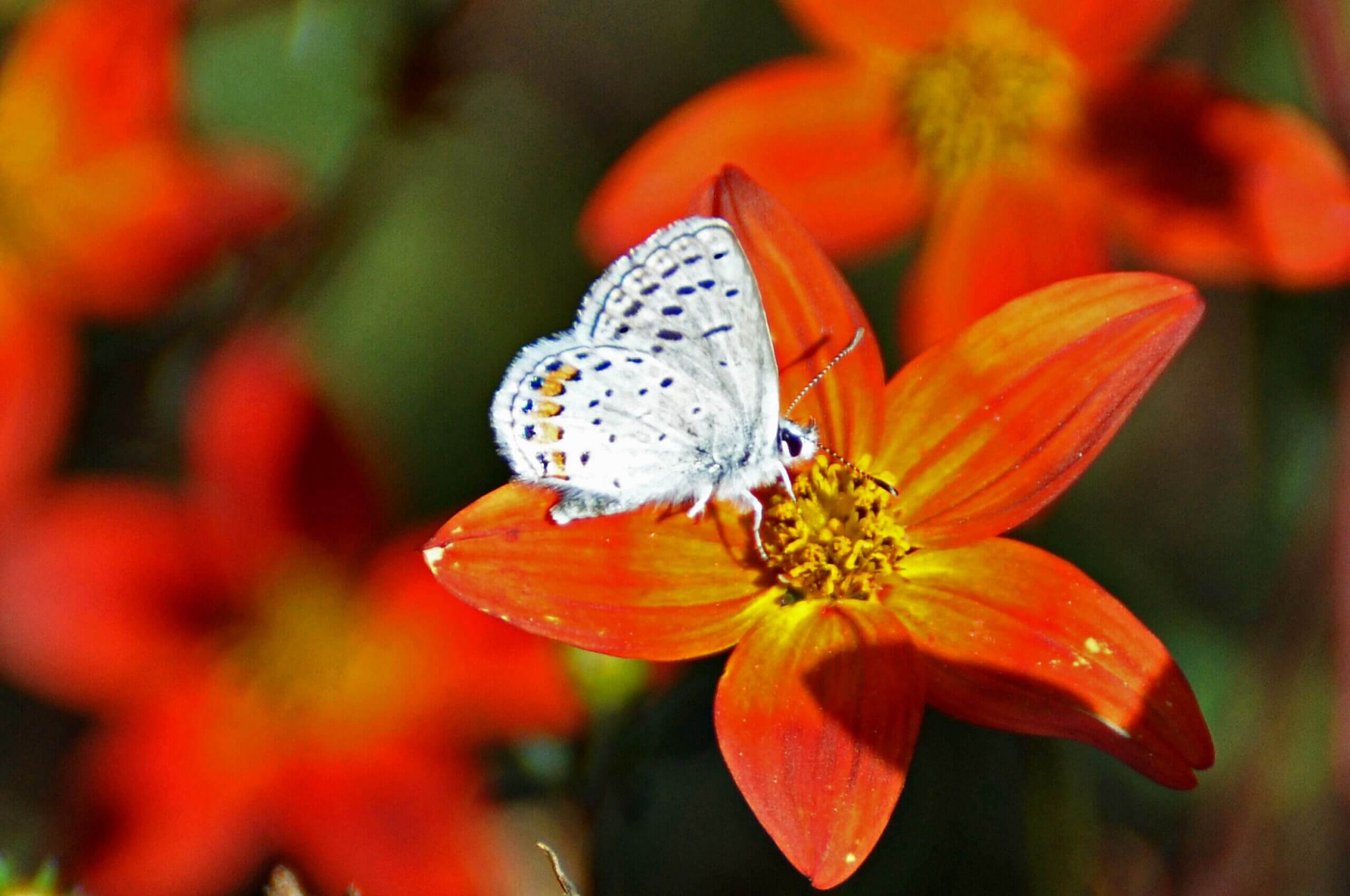
Gardening for Butterflies
The lovely winged jewels we call butterflies are the pioneering and reproductive life stage of an insect that goes through 3 other distinct stages: eggs, larvae (caterpillars), and pupae (chrysalids). The adult stage, the butterfly, is technically called the imago. About eighty percent of all insects are holometabolus, which is a way of partitioning resources, so that each life stage does not compete with any other. Your habitat garden needs to provide for the needs of every life stage in order for there to be butterflies.
The purpose of a butterfly’s often short life “on the wing” is simply to find a mate and the host plant on which to lay the eggs of the next generation. They will be looking for the plant that their hatched larvae will eat; many butterfly species are extremely choosy about what plant that is. The adult butterfly will need nectar for energy as she hunts for her special host plant. If you are interested in attracting a specific type of butterfly, check the handout at right, Butterfly Larval Host Plants, to learn some of the appropriate plants.
To get a good indication of which butterfly species are already present in the general area of your garden, start with specimens of flowering plants that are noted as really good nectar sources, and then observe the butterflies that come into your garden to feed. Buddleias, verbenas, and lantana, though not native, bloom for a long period of time and are loved by butterflies. Flowers in the composite family (aster, sunflower, or daisy), offer a landing pad when fully opened, which is important for the larger butterflies like the Monarchs. Flowers in the composite family are composed of hundreds of individual disc flowers, and petal flowers, and each of these tiny flowers provides nectar and pollen, thus providing a lot of food energy in one place! If you can, allow “managed” populations of weeds such as Italian thistle, English plantain, and cudweeds, which are favored larval host plants of some beautiful butterfly species.
Butterflies are not important pollinators of plants, but their beauty certainly adds to the charm of any garden!


Silvery Blue Butterflies
My home and garden are situated next to an open meadow, and within that meadow grows lots and lots of vetch! The vetch (vicia spp.) also shows up at the edges of my cultivated areas, but early on, while the plants are still small I pull some of it. There are two...
On Gossamer Wings: The Lycaenidae Butterflies
The Lycaenidae family of butterflies—blues, hairstreaks, coppers, and metalmarks, are usually small and very delicate looking, many of them brilliantly colored and some with very interesting life cycles. The apparent fragility of these tiny creatures earned the family...
The Swallowtails
Within the family Papilionidae are some of the largest and most spectacular butterflies in the world. Four species are commonly seen in Marin; each one associated with a particular type of habitat. Three are yellow with black markings; the Western Tiger Swallowtail,...







